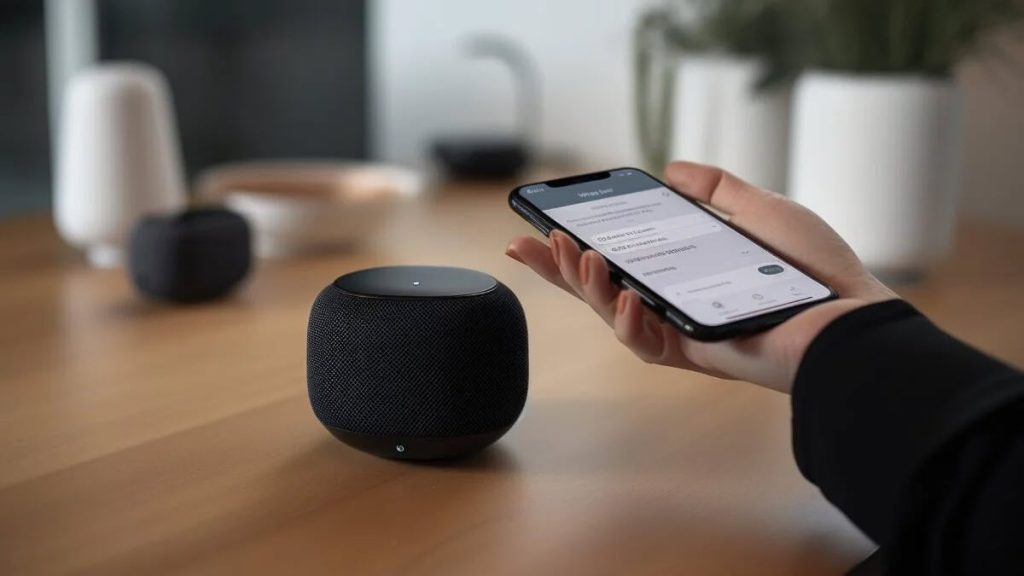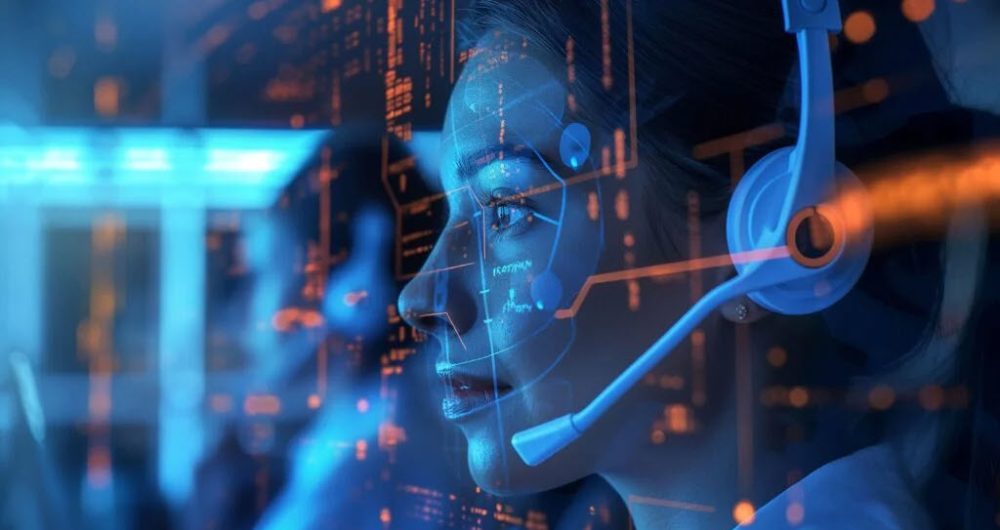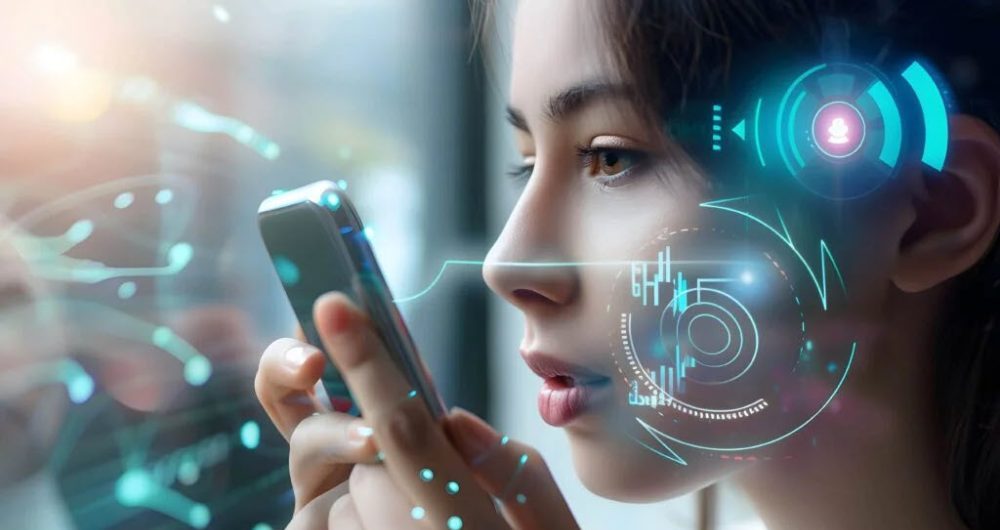
Spoofing has become a huge issue. In this type of fraud or scam, one person pretends to be someone else. This impersonation often happens through phishing emails or fake social media profiles. However, it can also happen on voice calls, such as a scammer pretending to be a customer. What can be done about it? How can you protect your company from this type of fraud?
Did you know? The financial loss caused by spoofing attacks is at an all-time high. For example, in just Japan alone the damages at end of November 2023 amounted to $56.4 million USD. This is reflective of a common trend across the globe.
One powerful tool in your fight against such fraud is to verify your customers’ identities. There are many ways to verify identities. However, one method that stands out for fraud prevention in call centers is Voice Biometric Authentication. In this article, we’ll explore how it works, its benefits, and how it can protect against modern threats like spoofing.

Traditional Identity Verification in Call Centers
In the past, call centers usually confirmed customer identities by asking for personal information, like names, birthdates, or addresses. While this method is common, it has some serious flaws in terms of security and convenience.
Security Challenges
The real problem is that personal information can be stolen. A scammer may use a phishing attack, a data breach, or other means to gain such details. These can then be used to answer security questions. Can you see the risk in this approach?
In industries such as finance, insurance, and healthcare, the following cases of identity theft have happened.
- Life Insurance: A scammer stole the personal information of some policy holders. Then in a phone call to the call center, pretended to be a policy holder and requested payment.
- Health Insurance: Scammers have sent fake payment requests and invoices. Then in contacting the call center, have pretended to be the customer or provider to confirm these requests.
- Finance: Spoofing attacks on credit card issuers have been used to request credit limit increases (to allow larger fraudulent charges) and to request transfers.
What can we conclude? Using personal information to verify identity is not effective. This method is susceptible to spoofing attacks on the call center. It is not a successful way to tighten security.
Lack of Convenience
Having to verify more than a few details over the phone can be frustrating for customers. It also takes time for agents to check if these match customer records. This can slow down phone calls and make your customer service less efficient.
What can we conclude? Using personal information to verify identity can frustrate customers and make your call center less productive.
What is the Answer?
These challenges are very real and increase the risk for your business. Is it possible to fight spoofing and at the same time balance safety and convenience? Yes! The answer on how to do so is Voice Biometric Authentication. This gives you a way to automate and simplify identity verification in a way that is less susceptible to fraud.

Voice Biometric Authentication: The Perfect Match for Call Centers
Voice Biometric Authentication is a type of security check that uses a person’s unique voice features, like tone and pitch, to confirm their identity. This method is a natural fit for call centers because it allows for fast, secure, and consistent identity verification.
How Does it work in Call Centers?
This security method uses unique aspects of a person’s voice, such as pronunciation, accent, speed, as well as physical characteristics such as vocal tract and vocal cords to identify a person. In other words, each person’s voice is different and can be viewed as a verbal signature.
These voice features are hard to fake. This makes this method a powerful tool in the fight against spoofing. Some global financial institutions are already using it in their phone systems, including IVR (Interactive Voice Response) systems and voice bots.

Three Proven Benefits of Voice Biometric Authentication in Customer Service
Here are three major advantages of using this security technology in call centers:
- Faster Verification: Conventional identity verification methods take at least several minutes. With Voice Biometric Authentication, the process is reduced to just seconds. For example, by using it Aflac was able to reduce the time to verify identity from 2 minutes to 30 seconds. It can even be done during the natural course of the conversation instead of as a separate step. As a result, it is possible to reduce the Average Handling Time (AHT) for calls. This not only improves security but increases agent efficiency and productivity. It is also more convenient for your customers.
- Real-Time Security: Since this way to verify who a person is happens during the call, it provides real-time protection. It’s difficult for a scammer to fake an identity during an ongoing conversation. That makes this method highly secure.
- Remote and Flexible: Voice verification works from any device that can make a call. Unlike facial recognition or fingerprint scanning, there is no special equipment needed. It can also be done anywhere. This makes it flexible and convenient for customers, helping improve the overall customer experience.
When it comes to identity verification in call centers, it’s clear that voice biometrics can be both safe and convenient. In addition, it contributes to improving the customer experience.

The Challenge of Deepfakes and AI
While Voice Biometric Authentication is highly effective, it’s not entirely foolproof. Advances in AI have made it easier for criminals to create deepfake audio and video that can bypass traditional biometric systems. In fact, there have been cases where AI-generated voices successfully broke through a secure voiceprint identity check.
For example, in a test case, a researcher from the Wall Street Journal (WSJ) used voice synthesis software to bypass the voice authentication system of a major U.S. bank. Although this was not a real attack, it showed what may be possible. Indeed, the rise of AI-powered tools has made it easier than ever to create fake voices or videos. This leads to new types of security risks.
How to Strengthen Voice Biometric Authentication
Using the voice to verify a customer’s identity is already more secure than checking personal information. However, to reduce the risk of spoofing from AI-powered tools, it can be made stronger. How? Consider how to use two proven strategies to fight deepfakes and AI-generated voice spoofing.
Strategy 1: Use Multi-Factor Authentication (MFA)
One way to combat the risk is by combining voice biometrics with another form of authentication. This will help you fight and stay ahead of the latest approaches to call center fraud. What are some multi-factor authentication (MFA) options for call centers?
- One-time passwords (OTPs)
- Another form of biometrics such as facial recognition or fingerprints.
But adding one of these other security methods, you gain a higher level of protection. By using multiple layers of security, call centers can defend against even the most advanced spoofing attempts.
That said, multi-factor authentication does have disadvantages and risks. For example, it can add extra time and effort to the process. This may counteract some of the speed and convenience you gain by using voice authentication. Therefore, you need to balance the pros and cons of combining methods in this way.
On its own, voice authentication is already a superior method to checking personal information. It has already found use in various industries that require confidentiality and certainty of identity. And the possible attacks against it are much more difficult and expensive than spoofing identity using personal information. So, each call center must carefully weigh the risks and decide if adding multi-factor authentication is the right solution or not.
Strategy 2: Use the Latest in Voice Biometric Technology
Another key strategy to fight the risk is choosing the right technical solution. Such systems are not all equal, and technology is advancing fast in this area. By making a wise choice, you can set your company up to fight spoofing to the best extent possible.
What should you look for in a modern solution?
- Increased speed and accuracy in voiceprint registration (look for about 10 seconds; older solutions took about 30-45 seconds).
- The ability to verify voiceprints in the background during natural conversation (older solutions may have needed specific phrases).
- Quick completion of the voiceprint analysis to confirm identity (look for 3-5 seconds; older solutions took at least 10-15 seconds).
- The ability to work even in very noisy environments.
As an example, consider NamiTech’s VoiceDNA system, which we in CBA offer and integrate. VoiceDNA leverages AI to increase the speed and accuracy of voice authentication. It shines even in the noisiest of environments and can identify a customer in 3-5 seconds of natural conversation.
Would you welcome a consultation to talk over the options you are comparing? At CBA, we have over 18 years of experience in helping call centers integrate the latest innovative solutions. Contact us today to tap into our expertise and network of partners.
Conclusion: Securing Call Centers in the Fight Against Spoofing
As a call center, we know that you put customer experience at the heart of your business. You strive to resolve calls promptly, on the first contact, while providing a pleasant and empathetic experience. Yet, the mission of a call center must also include protecting both your customers and company. You are the front line in the fight against spoofing and fraud, as the first customer contact point.
Security risks are changing from day to day. That’s why you can’t afford to stop moving ahead in your security practices. Sticking with old methods such as just checking personal information can lead to a heartbreaking loss. Don’t let this nightmare scenario happen to your call center! By using Voice Biometric Authentication, you can provide fast, convenient, and secure identity verification, helping to prevent spoofing and other types of fraud. If your call center is safe and secure for your customers, they will trust your company and remain loyal.
What's Next?
Stay ahead of the curve and request a demonstration of NamiTech’s VoiceDNA solution for voice identification. As your partner in customer service innovation, we’ve chosen to feature NamiTech due to the superiority of their solutions.
Request a Demonstration
This article by Reina Kikuchi of CBA was originally published in Japanese in the Touchpoint Innovation Journal on September 2, 2024.


